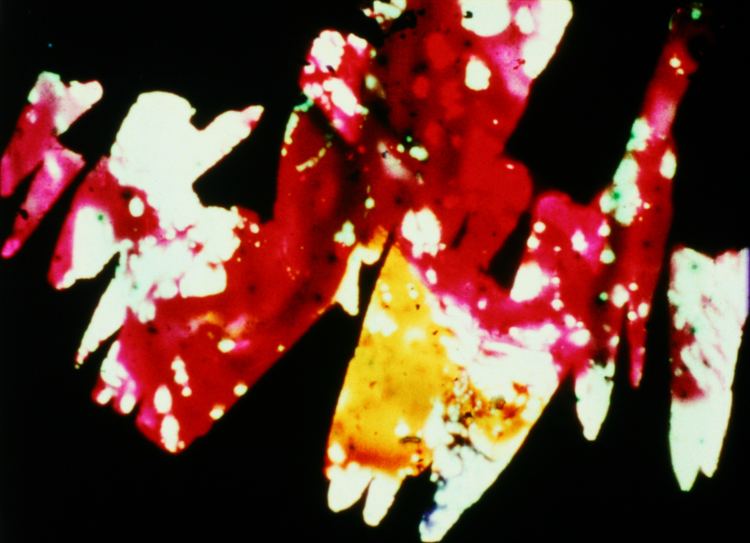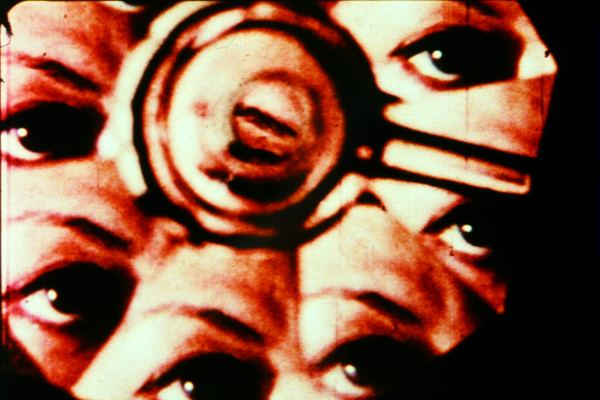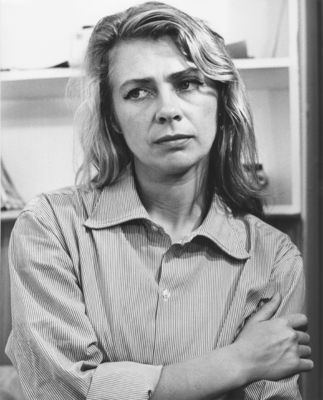Full Name Lillian Malkin Occupation poet, filmmaker | Name Storm Hirsch Role Poet | |
 | ||
Born 1912 New Jersey, U.S. Notable work Goodbye in the Mirror (1964)Divinations (1964)Peyote Queen (1965)The Tattooed Man (1969) Died 2000, Manhattan, New York City, New York, United States Spouse Louis Brigante (m. ?–1975) Movies Peyote Queen, Goodbye in the Mirror, Third Eye Butterfly People also search for Louis Brigante, Aldo Bontempo | ||
Storm de Hirsch (1912–2000) was an American poet and filmmaker. She was a key figure in the New York avant-garde film scene of the 1960s, and one of the founding members of the Film-Makers' Cooperative. Although often overlooked by historians, in recent years she has been recognized as a pioneer of underground cinema.
Contents

Biography

Born Lillian Malkin in New Jersey in 1912, Storm de Hirsch left home at an early age to pursue a career in the arts in New York City. There she married her first husband, an artist named de Hirsch. She later married Louis Brigante, a filmmaker and one of the early editors of Film Culture magazine; the marriage lasted until Brigante's death in 1975.

Like many experimental filmmakers at the time, de Hirsch did not begin her artistic career as a filmmaker; she was a poet who had published at least two collections by 1965. She turned to filmmaking because she wanted to find a new mode of expression for her thoughts that went beyond words on the page. In 1962 she made her first film and soon became active in the New York underground film movement, associating with filmmakers such as Stan Brakhage, Jonas Mekas, Shirley Clarke and others. In an interview with Jonas Mekas she mentioned Jack Smith, Ingmar Bergman, Gregory Markopoulos, Michelangelo Antonioni, Vittorio De Seta, Ken Jacobs, Federico Fellini and Jonas and Adolphus Mekas as her favorite filmmakers.

In addition to making films, de Hirsch taught at various institutions, including Bard College and New York's School of Visual Arts. After her husband's death she was forced to give up her studio, and stopped making films. She died in a Manhattan nursing home in 2000, following a long battle with Alzheimer's disease.
Work

Much of de Hirsch's work is abstract and employs a number of experimental techniques, such as frame-by-frame etching and painting and metadiagetic editing. In an interview with Jonas Mekas on the making of Divinations she said,

Sometimes her animations are superimposed over live-action footage. Her films are clearly influenced by her poetic background; she referred to her series of short, silent films shot in the 1970s as "Cine-Sonnets," and she continued publishing poetry throughout her life. Her films also reveal an interest in eastern religious practices and rituals. Her work explores the possibilities of light and is concerned with spatial elements. In one film, Third Eye Butterfly, she used a two-screen projection with split-screen frames to create a kaleidoscopic effect.
Not all of de Hirsch's films are cheaply made animated shorts. One of her early films, Goodbye in the Mirror (1964), is a feature-length live-action film shot on location in Rome, with her husband, Louis Brigante, serving as assistant director. Part scripted, part improvised, the film centers on three young women living in Rome, searching for meaning in their lives. The film was shot on 16mm and later blown up to 35mm, at a cost of around $20,000.
Her films have been screened at the Museum of Modern Art, the Whitney Museum of American Art, the Cannes Film Festival, the Ann Arbor Film Festival, and elsewhere. They are available through the Canyon Cinema Cooperative and the Film-Makers' Cooperative.
Influence
According to the Museum of Computer Art, de Hirsch's work "influences and anticipates the work of many later and current video artists." Her use of technical devices such as painting and etching directly on the film stock has been called pioneering, although those techniques had been used before by Len Lye, Stan Brakhage, and others. Tools and techniques aside, critics have characterized other aspects of her work as inventive or groundbreaking. Stan Vanderbeek called The Tattooed Man "a major work in terms of style, structure, graphic invention, image manipulation and symbolic ritual." Gwendolyn Foster cites Journey Around a Zero (1963) for its unusual treatment of male nudity, which reverses the cinematic tradition in which male filmmakers objectify the female body. Shirley Clarke, noting that Goodbye in the Mirror focuses on female characters and their reactions to a series of events, called it the first "real woman's film"; Wheeler Winston Dixon cites it as an "example of early Feminist cinema that led to the later work of Yvonne Rainer, Jane Campion, Sally Potter, Julie Dash and others."
Filmography
Undated:
She also appears in Piero Heliczer's Dirt (1965), Gregory Markopoulos's Galaxie (1966), and Jonas Mekas's Birth of a Nation (1997), and composed music for the soundtrack of Mekas's Film Magazine of the Arts (1963).
Poetry collections
Awards
Feminist perspective
Often described as a feminist, de Hirsch believed that when it came to the creative process there was no distinction between men and women. In 1967, Film Culture published "A Conversation: Shirley Clarke and Storm de Hirsch," in which the two women discussed gender and art.
"I think it's questionable as to whether the biological structure makes that much difference in terms of art. I have my own little theories about this, and I feel that when it comes to art, there's a question of soul, of the inner world, that's a universal thing; and I feel that the soul is neither male nor female."In the same conversation, she noted that she often received written responses to manuscripts addressed to "Mr. Storm," and she suspected that her work was better received when magazine editors thought she was male.
